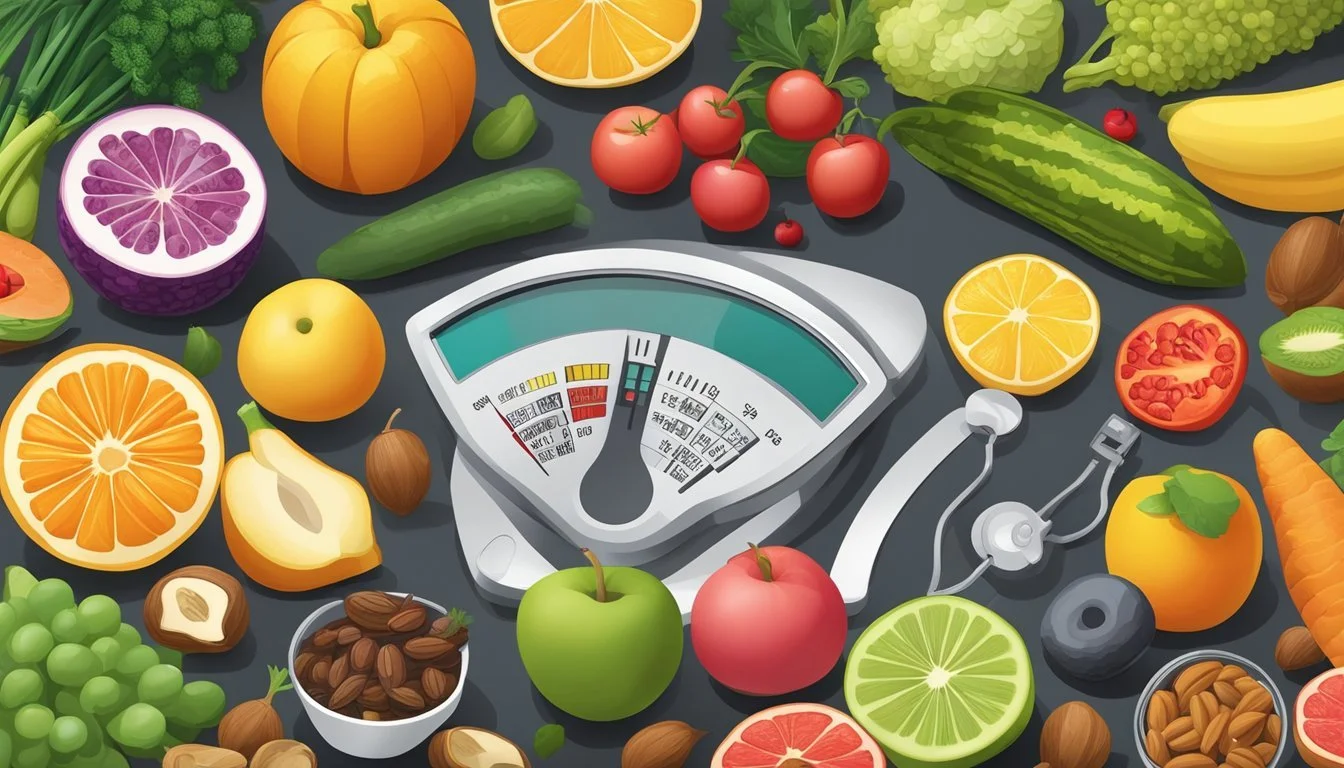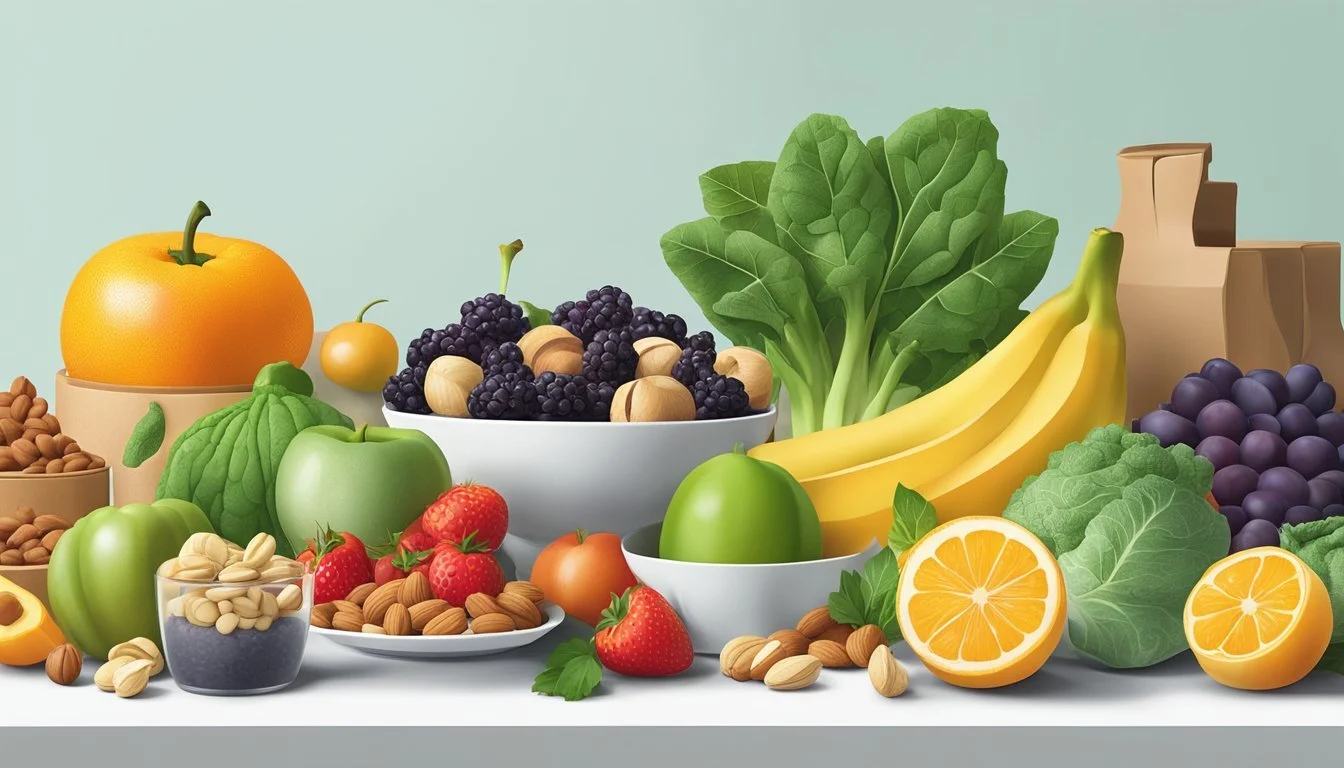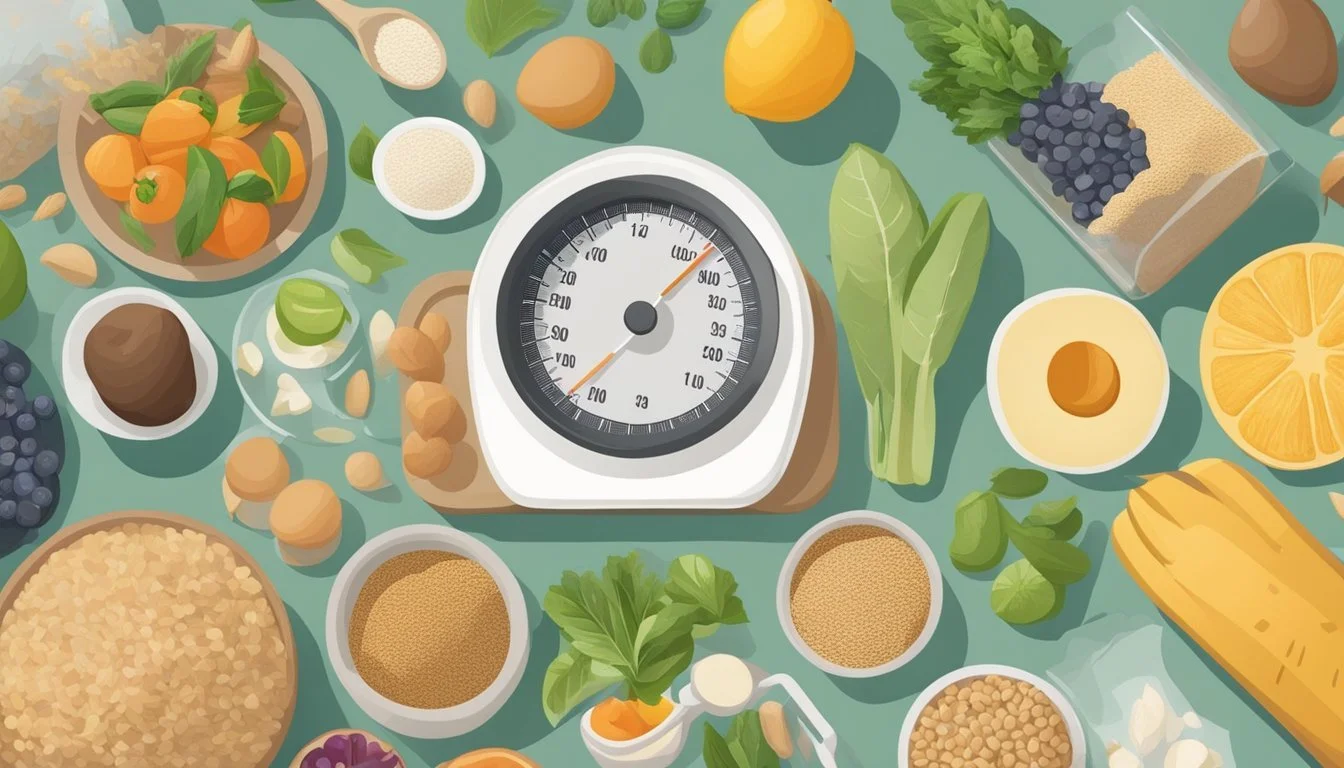Grain-Free Diet and Weight Loss
Understanding the Potential Impact
A grain-free diet eliminates all grains, such as wheat, rice, oats, barley, and rye, as well as food products derived from these grains. This type of diet is distinct from a gluten-free diet, which only avoids gluten-containing grains. Some individuals adopt a grain-free diet due to allergies, sensitivities, or certain health conditions, while others pursue it as a lifestyle choice with the belief that it may contribute to weight loss and improved health.
Weight loss on a grain-free diet may occur as a result of reduced consumption of processed and calorie-dense foods that are often high in grains, such as breads, pastas, and baked goods. By focusing on whole foods like vegetables, fruits, proteins, and healthy fats, individuals may naturally decrease their calorie intake, leading to weight loss. However, it is important to understand that eliminating grains is not a guaranteed or necessary step for losing weight. Weight loss ultimately depends on creating a calorie deficit and can be achieved in a variety of dietary patterns.
Adopting a grain-free diet can be challenging and may feel restrictive to some. Before making significant changes to one's eating habits, it is advised to consult with a healthcare provider or a registered dietitian. Such professionals can help ensure that the nutritional needs are met and that the diet is balanced, sustainable, and beneficial for the individual's specific health goals.
Adopting a grain-free diet can have a positive impact on weight loss and overall well-being. By prioritizing nutrient-dense foods and embracing a grain-free approach, individuals can support their weight management goals while relishing a diverse and satisfying culinary experience.
Understanding the influence of grains on grain-free cognitive function and grain-free sleep quality can deepen the appreciation for the potential benefits of a grain-free diet on weight loss. By being mindful of ingredients and exploring diverse recipes, individuals can create meals that cater to their overall wellness, including their weight management journey.
Exploring grain-free meal delivery services can provide a convenient and accessible way to enjoy a variety of nourishing, weight-friendly dishes, ensuring that individuals can prioritize their nutritional needs while being grain-free affordable.
By embracing the benefits of a grain-free diet for individuals of all ages, including grain-free kids, individuals can support their weight loss goals and overall well-being, creating a foundation for a vibrant and fulfilling lifestyle. Additionally, a grain-free diet can positively impact mental health, contributing to overall well-being and weight management.
Understanding Grain-Free Diets
A grain-free diet eliminates all grains and may lead to various health outcomes, including potential weight loss. This diet is distinct from a gluten-free diet and incorporates a variety of other food groups.
Definition and Core Principles of Grain-Free Diets
A grain-free diet involves eschewing all grains, which are seeds of grasses that include wheat, rice, barley, rye, oats, and corn. Proponents suggest that eliminating grains can contribute to better health and weight loss, as grains can be calorie-dense and less nutrient-rich when processed. Core principles focus on consuming whole foods rich in proteins, fats, and fiber while avoiding the carbs typically found in grains.
Differences Between Grain-Free and Gluten-Free Diets
While both diets eliminate wheat and other gluten-containing grains like barley and rye, a gluten-free diet only avoids grains with gluten, a protein that causes issues for those with celiac disease or gluten sensitivity. On the other hand, a grain-free diet cuts out all grains, irrespective of their gluten content. As such, gluten-free diets may include grains like rice and quinoa, which are off-limits in grain-free plans.
Common Foods Included in a Grain-Free Diet
Individuals on a grain-free diet populate their meals with a diverse range of foods. Here's a list of staple food groups and examples:
Meat: Includes all types of meat, such as beef, poultry, and pork.
Eggs: Considered a good source of protein.
Fish and Seafood: Provides essential fatty acids.
Dairy: Supplies calcium and protein, unless dairy-free options are preferred.
Vegetables: All, excluding corn, which is considered a grain.
Fruits: Generally included but often consumed in moderation due to sugar content.
Legumes: Such as beans and lentils, providing protein and fiber.
Nuts and Seeds: High in healthy fats and protein.
These foods offer a broad spectrum of vitamins, minerals, and other nutrients, while aiming to reduce dependency on grains as carbohydrate sources.
Potential Benefits of a Grain-Free Diet
Adopting a grain-free diet may offer numerous health benefits, particularly for individuals with specific dietary sensitivities or those looking to improve their metabolic health and digestion. This section explores the multiple advantages of eliminating grains from one's diet.
Weight Loss and Metabolic Health
Weight loss: A grain-free diet often results in the reduction of processed and high-calorie grain-based foods. The elimination of white bread, pasta, and other refined grain products can lead to a decrease in calorie intake, which may facilitate weight loss.
Metabolic health: By cutting out grains, individuals may also experience improvements in their metabolic health, including better blood sugar control. Grains, especially processed ones, can spike insulin levels, and eliminating them may help stabilize these levels.
Digestive Health and Inflammation
Digestive health: A diet devoid of grains may improve gut health, as grains can sometimes be difficult to digest. People with digestive issues might find relief from symptoms such as bloating, gas, and cramps.
Chronic inflammation: Grains can contribute to chronic inflammation in some individuals. A grain-free diet might reduce such systemic inflammation and alleviate related symptoms.
Effects on Celiac Disease and Gluten Sensitivity
Celiac disease: For people with celiac disease, a strict grain-free diet is essential as it helps avoid gluten, a protein that can damage their small intestine and lead to serious health issues.
Non-celiac gluten sensitivity: Those with non-celiac gluten sensitivity may also benefit from a grain-free diet. Although the symptoms are less severe than celiac disease, gluten can still cause discomfort and health problems.
Additional Health Benefits
Mental health: Some individuals report improvements in mental health conditions such as depression and anxiety when they eliminate grains from their diet.
Autoimmune diseases and allergies: Grains can exacerbate certain autoimmune diseases and allergies. Avoiding them could mitigate these conditions.
Nutrients: A grain-free diet encourages the consumption of a diverse range of nutrient-dense foods, which can increase the intake of vitamins, minerals, iron, magnesium, selenium, B vitamins, and trace minerals.
Fiber: While grains are a common fiber source, a grain-free diet can also be rich in fiber if it includes a variety of fruits, vegetables, legumes, nuts, and seeds.
Switching to a grain-free diet can support health and wellness in various ways, particularly for those with grain sensitivities or those seeking to enhance their diet's nutritional profile.
Grain-Free Diet and Weight Management
Adopting a grain-free diet has become a popular approach for individuals seeking weight loss. By eliminating grains, one may experience changes in body composition through adjustments in macronutrient intake. This section explores how a grain-free diet may influence weight, the role of macronutrients in weight loss, and strategies for maintaining weight in the long term.
How Removing Grains Can Affect Weight
Removing grains from one's diet can lead to a reduction in carbohydrate intake, potentially resulting in weight loss. Grains are a staple source of carbs, which, when excess, are stored as fat in the body. Transitioning to a grain-free diet means that a person often replaces grains with foods higher in protein and fat, which can enhance satiety and reduce overall calorie consumption.
Typical carbohydrate sources removed in a grain-free diet include:
White bread
Pasta
Pizza
Doughnuts
Potential replacements high in protein and fat might be:
Meat
Fish and seafood
Eggs
Balancing Macronutrients for Sustained Weight Loss
For those following grain-free diets such as paleo or keto, the emphasis on protein and fat over carbohydrates is crucial. Protein can increase the feeling of fullness and raise the body's metabolic rate, while dietary fat can also contribute to satiety. On the other hand, diets too low in carbs may lack sufficient fiber, which is important for gastrointestinal health and can aid in weight management. It's important to balance macronutrients to not only lose weight but also to ensure adequate intake of essential nutrients.
Macronutrient composition in a balanced grain-free approach may include:
Macronutrient Examples Protein Meat, fish, eggs, legumes Fat Avocado, nuts, olive oil Carbs Leafy greens, non-starchy vegetables
Long-Term Weight Management Strategies
Adopting a grain-free diet for weight management requires more than just the initial weight loss; it involves developing long-term eating habits. Ensuring that a person's diet remains rich in nutrients while avoiding processed grains and sugars is important for sustained weight management. Additionally, incorporating a variety of foods to prevent potential nutrient deficiencies that may arise from a limited diet is beneficial. Regular physical activity and monitoring portion sizes are also critical to maintaining weight over time.
Key components of a long-term grain-free weight management plan:
Consumption of nutrient-dense, whole foods
Avoidance of high-sugar foods even if they are grain-free
Regular physical activity
By concentrating on whole foods and maintaining a balance of macronutrients, those on a grain-free diet can manage their weight effectively and potentially improve overall health.
Implementing a Grain-Free Diet
Implementing a grain-free diet involves a strategic approach to eliminate all grains from one's nutrition plan while ensuring to maintain a balanced intake of macronutrients and micronutrients.
Getting Started with Grain-Free Eating
To begin a grain-free diet, one must first understand which foods to exclude and which to include. Grains to avoid include wheat, rice, oats, barley, rye, and products made from these like bread, pasta, cereal, flour-based products, and snack foods such as crackers. Instead, one can consume grain alternatives such as starchy vegetables (including pumpkin), almonds, coconut, and flaxseed. Consulting a nutritionist can provide personalized guidance and ensure that essential nutrients are not overlooked.
Planning Grain-Free Meals and Snacks
Planning meals and snacks requires mindful substitutions to replace common grain-based foods. For breakfast, instead of cereal or toast, one might opt for a spinach and mushroom omelet. Lunch and dinner can incorporate salads, vegetable stir-fries, or grilled meats with side dishes of roasted starchy vegetables or mixed greens. Snacks can include nuts, seeds, or yogurt. Ingredients to be cautious with include processed foods that often contain hidden grain-derived ingredients.
Grain-Free Recipes and Cooking Tips
When cooking grain-free, focus on using grain-free flours such as almond or coconut flour for baking needs, which allow for the creation of grain-free versions of favorites such as muffins, cakes, and pizza crusts. Grain-free pasta alternatives include those made from lentils or zucchini noodles. Cauliflower can be transformed into a pizza base or rice-like side dish. Always check labels for hidden grains, and prefer whole food ingredients over processed options.
Challenges and Considerations
Adopting a grain-free diet for weight loss purposes can lead to certain challenges and requires careful planning to ensure one's health is not compromised. This section delves into potential obstacles such as managing nutritional intake, dealing with the diet's impact on social life and emotions, and considering long-term adherence to this eating pattern.
Nutritional Deficiencies and How to Avoid Them
Grain-free diets omit foods such as rice, wheat, barley, and oats, which are traditional sources of fiber, vitamins, and minerals. Individuals may face deficiencies in B vitamins, iron, magnesium, and selenium, essential nutrients often abundant in whole grains.
To mitigate nutritional risks, individuals should incorporate:
Legumes: Beans and lentils to provide fiber and iron.
Pseudocereals: Quinoa and buckwheat for B vitamins and magnesium.
Nuts and seeds: For selenium and healthy fats.
Leafy greens: To maintain adequate nutrient levels, specifically iron and B vitamins.
One should consult a nutritionist to tailor a balanced diet plan that meets all their nutritional needs.
Addressing Social and Emotional Aspects of Dieting
Dietary changes can impact one's social interactions and emotional well-being. Eliminating grains might lead to situations which can induce feelings of isolation or frustration during social events where grain-based foods are the norm. Furthermore, dietary restrictions might trigger emotional responses like depression or anxiety in some individuals.
Strategies to manage these aspects include:
Open Communication: Discuss dietary needs with friends and family to facilitate social dining.
Support Groups: Join community groups or online forums for emotional support and shared experiences.
Mindful Eating Practices: Cultivate awareness around food choices to maintain a positive relationship with eating.
Evaluating the Sustainability of a Grain-Free Diet
The long-term success of a grain-free diet depends on its sustainability both in terms of adherence and continuous weight management. It is essential to consider if a grain-free lifestyle is compatible with one's preferences and if it can prevent potential weight gain recurrence.
When evaluating sustainability, one should:
Assess personal food preferences: Ensure the diet is enjoyable to encourage consistency.
Monitor health conditions: Regular check-ins with healthcare providers to watch for any adverse effects on health.
Plan for variety: Include a wide range of permitted foods to prevent boredom and maintain enthusiasm for the diet.
By thoughtfully addressing these considerations, individuals can better navigate the complexities of a grain-free diet and its role in weight loss.
Scientific Evidence and Research
In examining the relationship between grain-free diets and health, research provides insights into their effects on weight loss, chronic diseases, and gut health. Distinct studies have addressed how eliminating grains may benefit individuals with certain health conditions, influence metabolic processes, and affect the gut microbiome.
Studies on Grain-Free Diets and Weight Loss
Research on grain-free diets suggests a potential for weight loss, attributed to a lower intake of processed foods and refined carbohydrates. Grain-free diets often lead to a reduction in calories and a higher intake of protein and fat, which can increase satiety and reduce overall food consumption. However, it is crucial to note that long-term effects and comparisons with other diets are less well-documented.
The Impact of Grain-Free Diets on Chronic Diseases
Grains are excluded in grain-free diets, which can be beneficial for individuals with celiac disease or gluten sensitivity, resulting in reduced inflammation and symptomatic relief. For those with diabetes or metabolic syndrome, such diets may improve glycemic control and insulin sensitivity. Some studies propose that grain-free diets could also influence other health areas, including neurological conditions like schizophrenia, though more research is needed to substantiate these claims.
Grain-Free Diets and Gut Health
Grain-free diets may have an impact on gut health by modifying the composition of the gut microbiota. By eliminating grains, particularly those containing gluten, individuals may experience improved digestion and a decrease in gastrointestinal inflammation. This can be especially relevant for those with grain sensitivities. However, the long-term implications on gut health and the potential for nutrient deficiencies due to the absence of whole grains require careful consideration.
Alternatives and Moderation
When transitioning to a grain-free diet for weight loss, individuals should consider the nutritional benefits of whole grains and possible grain substitutes to maintain a balanced diet. This section will address strategies for balanced grain intake and explore substitute foods that align with grain-free objectives.
Incorporating Whole Grains for Balance
Reducing grain consumption doesn't necessitate the complete elimination of all grains, especially when they contribute essential nutrients. Whole grains, such as brown rice, oatmeal, and whole wheat, can be included in moderation due to their beneficial content of fiber, vitamins, and minerals. Individuals with gluten sensitivities or celiac disease, however, should opt for gluten-free whole grains like sorghum, millet, and buckwheat.
Exploring Partial Grain Reduction Strategies
Instead of a full grain-free diet, some individuals choose to reduce their grain intake to see if they experience improvements in weight and health. This can involve cutting back on refined grains and emphasizing gluten-free grains and pseudocereals like quinoa, amaranth, and teff. For those with sensitivities but not strict allergies, this strategy may maintain diet variety without causing discomfort.
Grain Alternatives and Substitutes in a Balanced Diet
Grain-free diets can be rich and varied, relying on a repertoire of non-grain foods. Here's a list of nutrient-dense substitutes that can be included:
Legumes: Beans, lentils, and chickpeas.
Nuts and Seeds: Almonds, walnuts, chia seeds, and flaxseeds.
Pseudocereals: Quinoa, buckwheat, and amaranth, all of which are complete proteins.
Vegetables: Cauliflower (riced), zucchini (noodled), and sweet potatoes.
These alternatives not only replicate the textures and functions of traditional grains in dishes but also provide diverse dietary fiber, proteins, and other nutrients, which support a balanced, grain-free diet.





